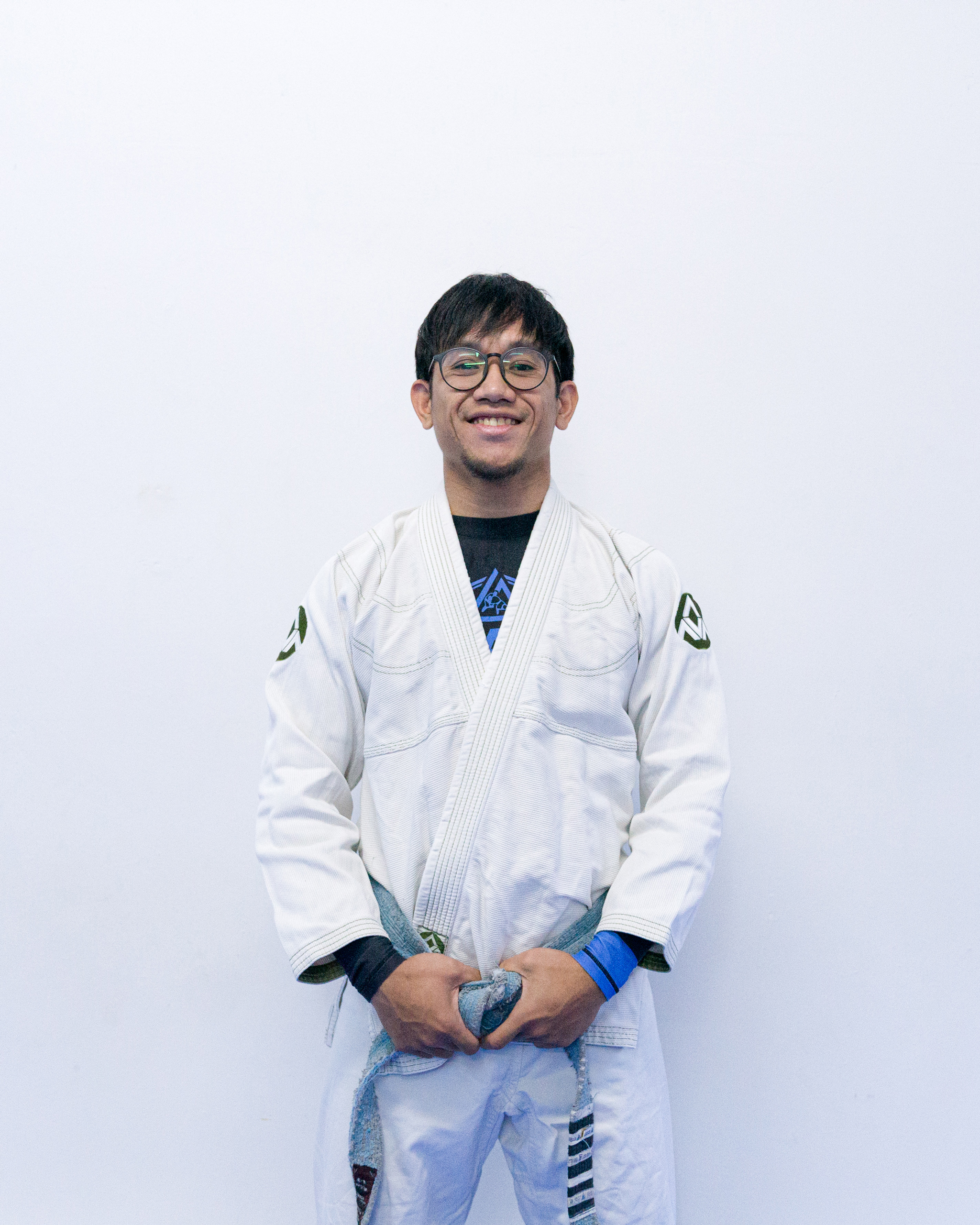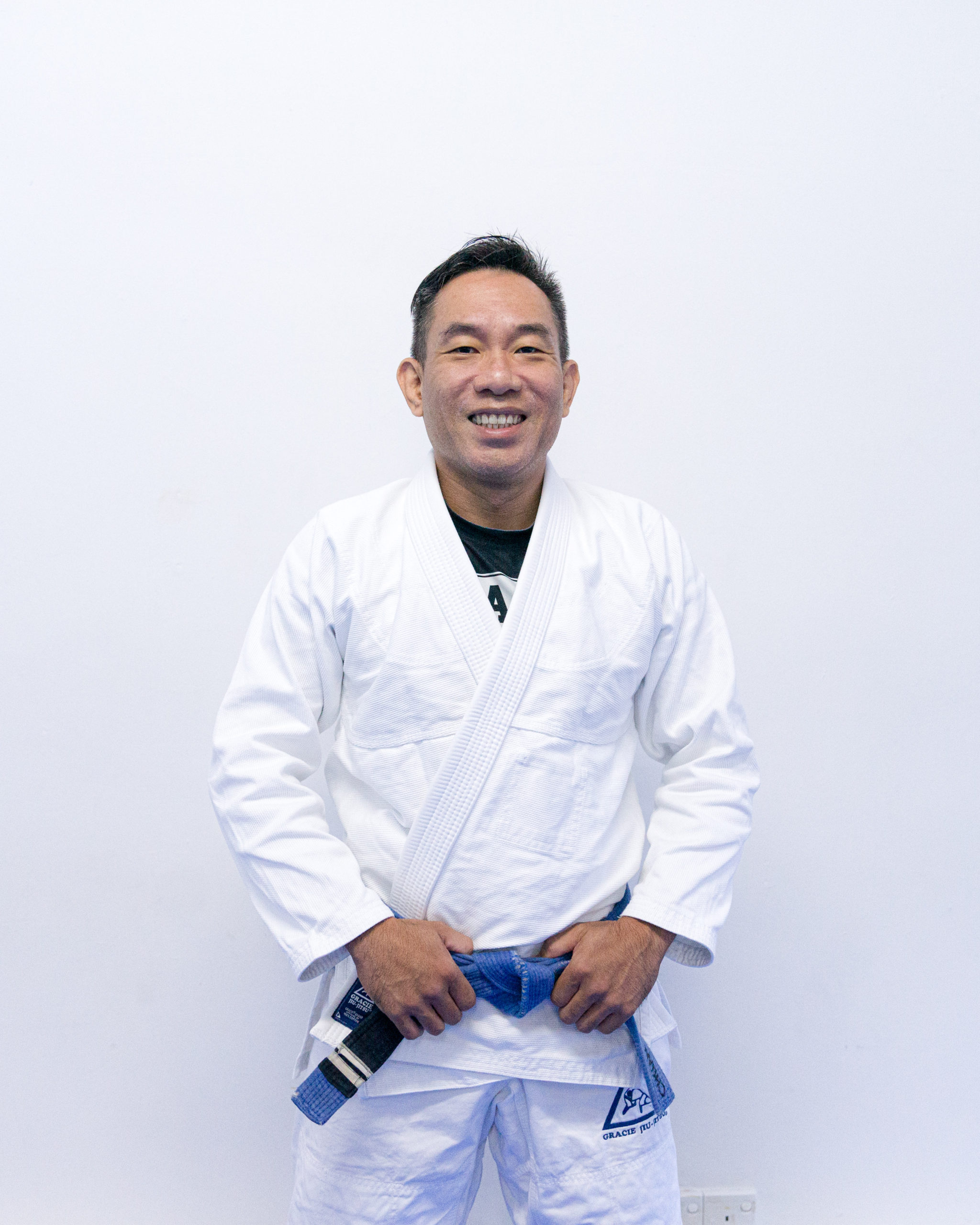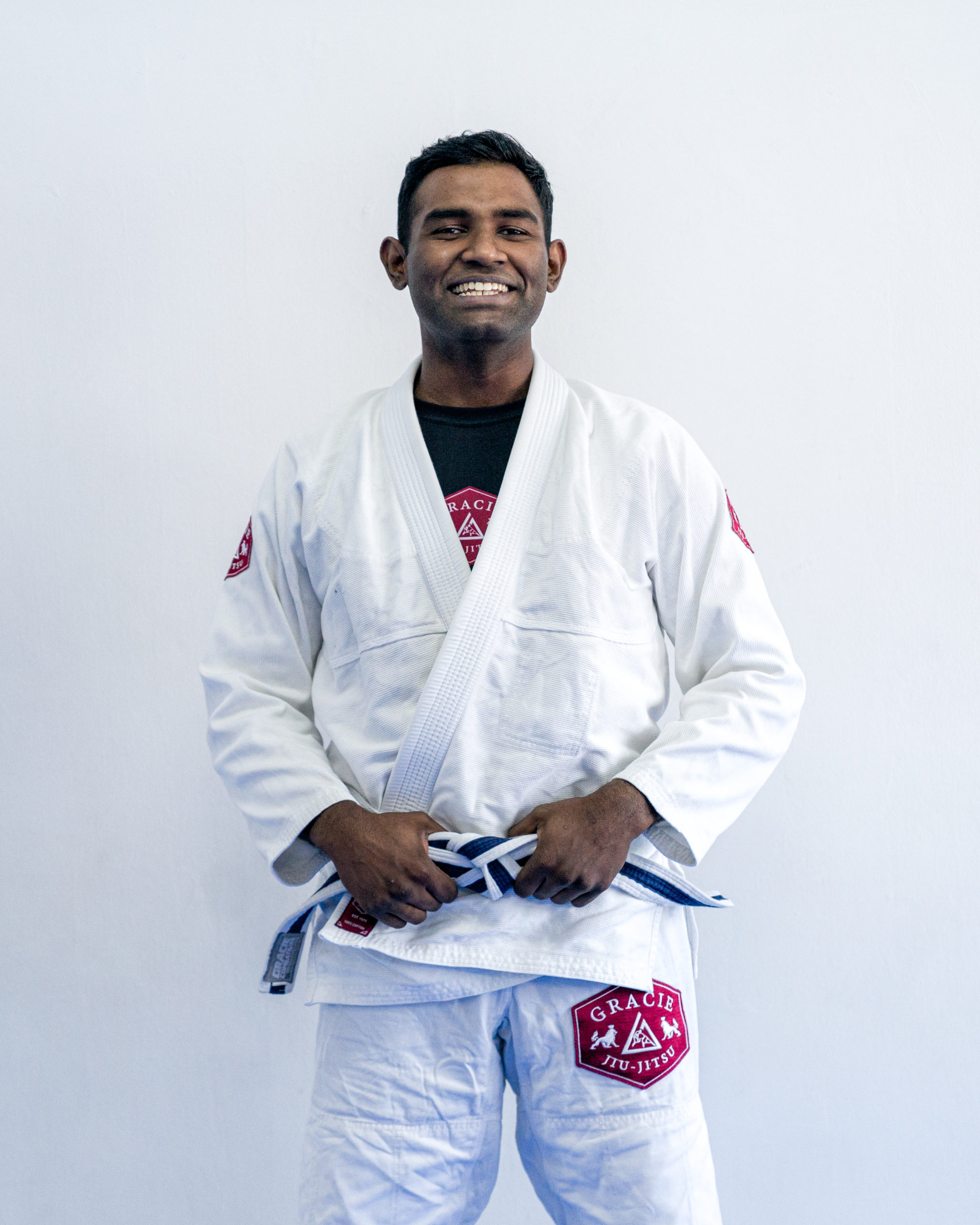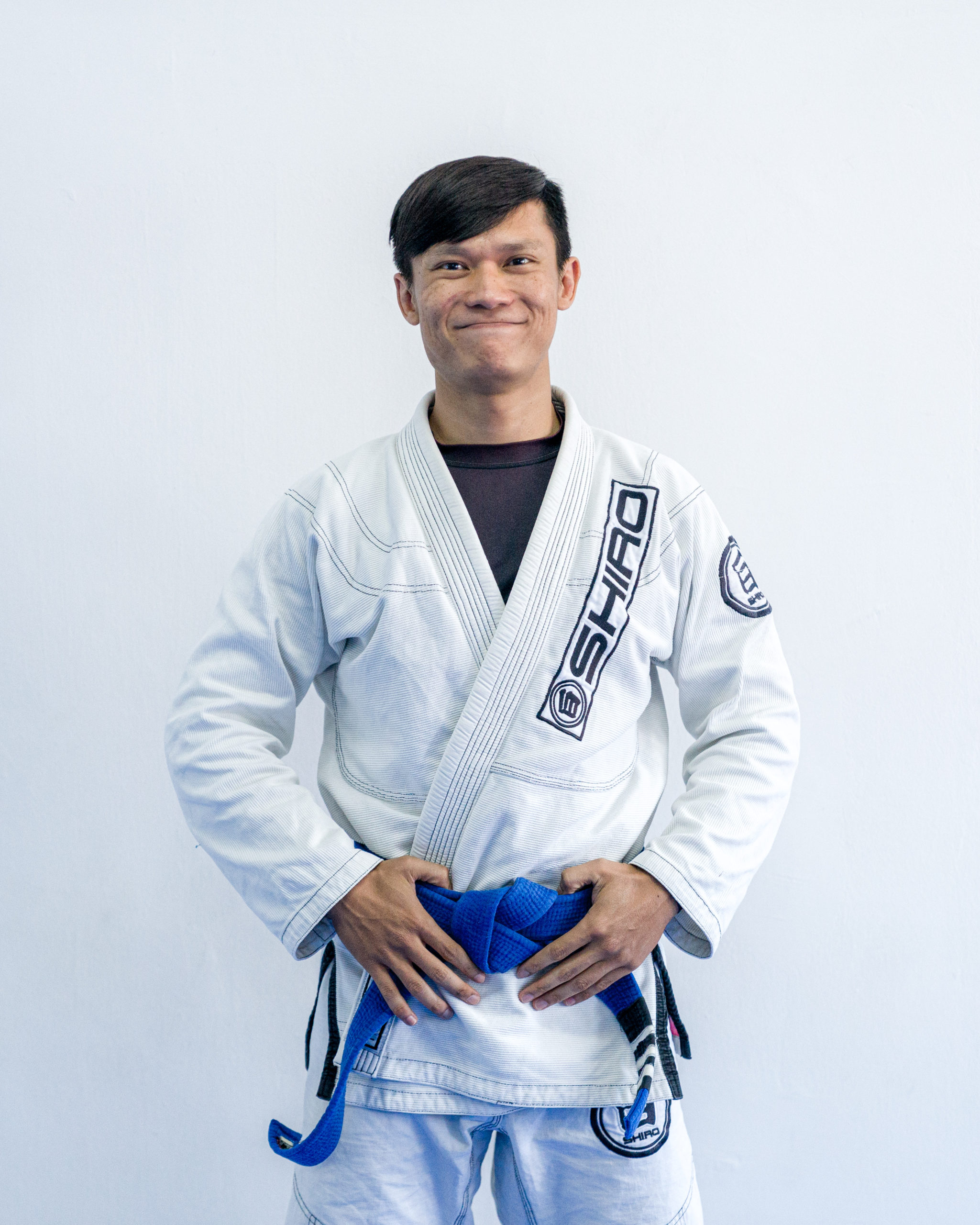ABOUT US
ACADEMY
Welcome to Gracie Academy Singapore!
Gracie Academy Singapore is the official representation of Gracie Academy Headquarters in Torrance, California.
At Gracie Academy Singapore we are fully committed to preserving Grandmaster Hélio Gracie’s vision, teaching method, and ideals both on and off the mat.
Our goal is to teach the average person on how to effectively and efficiently be able to defend themselves in the street without relying on brute strength, speed or aggressiveness but instead on leverage, timing and technique.
We believe that for an average normal person with no prior experience to be able to achieve this strategy all they need to do is learn, commit and go through the Gracie Combatives® Course that we offer.
To learn more about Gracie Jiu-Jitsu contact us today and start your Jiu-Jitsu journey!
INTRODUCTION
At a very young age, Helio Gracie learned traditional Japanese Jiu-Jitsu techniques from his older brother, Carlos. In the late 1920s, he began to modify these techniques to accommodate his frail physique with the objective of developing a system that would enable him to defend himself against larger opponents. After years of refinement, he proved his art’s effectiveness by routinely defeating larger and stronger opponents, some of whom outweighed him by as much as 100 pounds. As a result, Helio’s techniques quickly became the new expression of Jiu-Jitsu in Brazil and set the stage for a worldwide revolution in martial arts.
In 1967, under Grand Master Helio Gracie’s guidance, jiu-jitsu practitioners established the first Federation of Jiu-Jitsu in Brazil to host recreational competitions in which they could test their self-defense skills in a safe setting. An unintended by-product of this development was a shift from jiu-jitsu for self-defense purposes to sport-focused techniques and applications. The excitement and fun of competition, coupled with the prestige that accompanied tournament victories, drove the vast majority of jiu-jitsu instructors to focus entirely on preparing their students for tournaments. They dedicated their training sessions to developing techniques that would lead to victory based on the point system, rules, and weight classes that governed sport jiu-jitsu. Unfortunately, the tournament epidemic had dire consequences. It undermined the art’s effectiveness because most sport jiu-jitsu techniques had little or no applicability in a real fight. Worse, by perfecting the sport techniques, a student often developed reflexes that could be disastrously counter-productive in a street self-defense situation. Unwilling to compromise on the foundational principles of his art, Helio resigned from the Federation.
In 1978, Rorion Gracie, Helio’s eldest son, left Brazil and came to the United States to share his father’s techniques with the rest of the world. Upon his arrival, he immediately noticed that most Americans had no appreciation for jiu-jitsu’s effectiveness. Even those with knowledge of martial arts confused his family’s system with the traditional Japanese Jiu-Jitsu that had been in America since the 1950s. In order to emphasize the distinction between the two disciplines, Rorion trademarked the name “Gracie Jiu-Jitsu.”
Rorion spent several years teaching out of his garage while leading a one-man campaign to open the eyes of American martial artists to Gracie Jiu-Jitsu’s simplicity and effectiveness and concluded that, despite his tireless and constant efforts, he needed a more powerful and visible way to demonstrate the superiority of Gracie Jiu-Jitsu over all other martial arts. To accomplish this, he created the Ultimate Fighting Championship (UFC). This pay-per-view television spectacle shocked the martial arts world as his brother Royce used the simple techniques of Gracie Jiu-Jitsu to repeatedly defeat larger, more athletic opponents armed with a wide variety of martial arts skills.
The success of Gracie Jiu-Jitsu in the UFC spurred many sport jiu-jitsu practitioners to leave Brazil in order to capitalize on the increased demand for Gracie Jiu-Jitsu instruction. Due to legal restrictions on the use of the trademarked name “Gracie Jiu-Jitsu,” these instructors began using the name “Brazilian Jiu-Jitsu” as an alternative.
The influx of sport jiu-jitsu instructors, many of whom were members of the very large extended Gracie family, led to the establishment of numerous jiu-jitsu schools all across the United States. Nearly all of these schools claimed to teach the same jiu-jitsu that Grand Master Helio Gracie had created and Royce employed in the UFC. In fact, most of them were teaching a version of the art modified specifically for sport competition. Students hoping to acquire the realistic self-defense skills they saw in the UFC flocked to these schools and often trained for several years before they came to the disappointing realization that what they were learning had very limited street applicability.
The worldwide demand for Gracie or Brazilian Jiu-Jitsu instruction continues to grow at a phenomenal rate – without regulation. As a result, many jiu-jitsu practitioners with widely varying skill levels have opened schools to capitalize on this demand. At best, these self-proclaimed instructors are competent sport jiu-jitsu practitioners. At worst, they are marginally skilled, lack depth of knowledge, or are simply poor instructors. To counter this disturbing trend, the Gracie Academy has launched the Global Training Program aimed at perpetuating the techniques and principles of Gracie Jiu-Jitsu in their purest form – as a method of self-defense.
To watch a very Renergized video of Rener explaining the principles of Gracie Jiu-Jitsu and the difference between street and sportive practice, click here.
HEAD INSTRUCTOR

Danial Ibrahim
Danial Ibrahim went through the Instructor Certification Program in January 2016 after being a Gracie University Student since 2012. Understanding that the smaller guy may never overpower a larger, faster and aggressive opponent Danial began searching for a solution and thus found Gracie Jiu-Jitsu.
Realizing the effectiveness of this art Danial has dedicated his life to teaching the techniques and philosophy of Gracie Jiu-Jitsu to those who need it most. Affected so positively by the teachings of Ryron and Rener, Danial’s mission is to provide a learning experience to students in Singapore that mirrors the high professional standards of the Gracie University Headquarters in Torrance, California.
ASSISTANT INSTRUCTORS

Chuan Loo
In 2016, Chuan was looking to train in the martial arts to keep himself agile and fit. Then, a friend of his recommended him to join Gracie Jiu-jitsu. He was so impressed by how classes were conducted because even with existing injuries, he was still able to train regularly and safely. There was no brute force used, just pure techniques, timing, leverages and energy efficiencies.
He completed the Gracie Combative Program in 2018 and continued training in the Master cycle for a few years. He graduated from the Instructor Certification Program (ICP) in July 2020 and continues his jiu-jitsu journey by sharing the knowledge to people who need it most, be it for self defence or to keep one fit and agile.

Edwin Ho
Edwin Ho started Gracie Jiu-Jitsu at our school in 2019. For a long time, Edwin had been a “big guy” and wanted to know if he could push himself to change
Being curious he set foot into Gracie Jiu-Jitsu and was amazed to see how efficient and effective Gracie Jiu-Jitsu was not only at helping to change his lifestyle and outlook but also to defend himself using “Alavanca” and the camaraderie and support that was presented throughout his entire time spent learning Gracie Jiu-Jitsu which he truly appreciates.
Thanks to the support of his fellow peers and love for Gracie Jiu-Jitsu Edwin wanted everyone he met could also make a change to feel amazing thus he took ICP in October 2020 and now he’s set to help everyone on how Gracie Jiu-Jitsu can help everyone Defend themselves and thrive them to go even further beyond.

Firman Shah
Firman Shah started training under Head Instructor Danial before our school was officially opened. A former bodybuilding and muay thai enthusiast who believed that athleticism was king, he was sold to Gracie Jiu Jitsu when Danial repeatedly controlled and submitted him with grace despite their 20kg weight difference.
As Firman progressed along his Gracie Jiu Jitsu journey, he realized the greatest benefit gained was how his mindset evolved from being ambition-driven to positively leveraging on whatever life throws at him.
He tries to emulate in his daily life, his favourite quote from Ryron, “Once you learn to remain calm under the stressful circumstances of a fight, you will have no trouble remaining calm under the stressful circumstances of life”.
HISTORY
“As to the origin and native land of Ju Jutsu, there are several opinions, but they are found to be mere assumptions based on narratives relating to the founding of certain schools, or some incidental records or illustrations found in the ancient manuscripts not only in Japan but in China, Persia, Germany, and Egypt. There is no record by which the origins of Ju Jutsu can be definitely established. It would, however, be rational to assume that ever since the creation, with the instinct of self-preservation, man has had to fight for existence, and was inspired to develop an art or skill to implement the body mechanism for this purpose. In such efforts, the development may have taken various courses according to the condition of life or tribal circumstance, but the object and mechanics of the body being common, the results could not have been so very different from each other. No doubt this is the reason for finding records relating to the practice of arts similar to Ju Jutsu in various parts of the world, and also for the lack of records of its origins.”
–Sensei G. Koizumi, Kodokan 7th Dan
THE VARIOUS THEORIES
Like many other subjects of history, it would be impossible to accurately describe the origin of Jiu-Jitsu. However there is no lack of hypotheses. Every culture has shown to have some form of hand-to-hand combat in its history. Weaponless combat usually appears in the form of wrestling and sometimes boxing. Looking at a fighting timeline, it is possible that the wrestling techniques of Jiu-Jitsu could have been influenced by Ancient Greece. The Olympic Games were one of the Greek’s traditions. In fact one of its most popular sports, Pankration was a sport that involved both boxing and wrestling techniques and became more popular to the Greeks than each one of them individually. During Alexander the Great’s conquests (356 – 323 B.C.), he brought the Greek culture to the areas he conquered. His conquests stretched all the way to India, where he introduced the customs and ideals of Greek culture to the people of that area where Jiu-Jitsu’s foundation was likely to have been born.
The general idea embraced by most historians is that systemized martial arts techniques came from India along with Buddhism (Dharma). The concept here is that the Shaolin temple was built in the center of China and this is where Dharma introduced Buddhism and Boxing. Buddhist Monks in northern India are said to have greatly contributed to the early development of Jiu-Jitsu. Bandits constantly assaulted the monks during their long journeys through the interior of India. Buddhist religious and moral values did not encourage the use of weapons so they were forced to develop an empty hand system of self-defense.
These Monks were men of great wisdom who possessed a perfect knowledge of the human body. Consequently, they applied laws of physics such as leverage, momentum, balance, center of gravity, friction, weight transmission and manipulation of the human anatomy’s vital points in order to create a scientific art of self-defense.
Another version supports the idea of Jiu-Jitsu coming from China around the time of the fall of the Ming Dynasty. When a Chinese monk named Chin Gen Pinh came to Japan, accompanied with his knowledge and experience of Kempo, known as the “China Hand.” Another theory says that there were practitioners of Chikura Karube, a wrestling sport developed around 200 B.C. It is said that Chikura Karube later became Jiu-jitsu in Japan.
One thing is certain about these stories, and that is that the Japanese were responsible for refining a grappling art into a very sophisticated grappling system called Jiu-Jitsu which was developed in Japan during the Feudal period.
GRACIE PHILOSOPHY
The application of traditional Gracie Jiu-Jitsu transcends the application of chokes, joint locks, immobilizations, throws, and strikes. Gracie Jiu-Jitsu is a way of life. Beyond the mat, members of the Gracie family live balanced, healthy lives based on the same philosophy that governs their unique self-defense system. Grand Masters Carlos and Helio Gracie believed that the principles of efficiency, patience, and control held the key to success in all aspects of life.
Efficiency
Efficiency, the ability to achieve maximum output with minimum input, is a core principle of Gracie Jiu-Jitsu. At the Gracie Academy, we assume that your attacker will always be larger and more athletic than you. Our students quickly learn that the only reliable way to succeed is to exhaust your attacker while conserving your own energy through the use of leverage-based techniques and natural body movements. In life, as in a fight, a student who learns to expend energy efficiently will achieve maximum results with minimal effort. For example,
- Eating healthily is Gracie Jiu-Jitsu
- Being honest/respectful to others is Gracie Jiu-Jitsu
- Being a hardworking/morally correct business person is Gracie Jiu-Jitsu
All of these are examples of ways to achieve maximum results with minimum effort.
Patience
Patience is often the key to success in a struggle against a larger opponent. Usually, it is not the person who attacks the most, but the one who exhausts the least who will win. Acting impulsively, aggressively, or without focus wastes energy. Patience also applies to timing. Even a perfectly executed technique will fail if attempted at the wrong time. In life, too, patience and timing enable you to “make your own luck” by calmly watching and waiting until the right moment when you can apply your energy most efficiently.
- Being patient with your friends and loved ones, as well as your enemies, is Gracie Jiu-Jitsu
- Allowing impulses to pass before acting is Gracie Jiu-Jitsu
- Taking a deep breath and considering all alternatives before committing is Gracie Jiu-Jitsu
Patience and timing allow you to know when to commit while efficiency ensures that you have sufficient energy to achieve your objective when the time is right for action.
Control
The final objective in a fight is to impose your will on your opponent. Nothing achieves this more quickly than physical domination after which surrender usually follows. Physical domination means controlling your opponent. Without control, you risk losing the fight. In life, control applies not only to a simple contest between you and an opponent, but also to the struggle within yourself. Self-control reflects your personal discipline and is the foundation for every decision you make in life. Without self-control, you risk a lifetime of poor choices that invariably lead to tragic consequences.
- Refraining from using drugs or alcohol is Gracie Jiu-Jitsu
- Choosing healthy, nutritious food over junk food is Gracie Jiu-Jitsu
- Having the discipline to engage in regular exercise and rest is Gracie Jiu-Jitsu
The Gracie Triangle
The Gracie Triangle, the widely recognized symbol of the Gracie Academy, has evolved over the years. Today, it appears on the storefront of every martial arts school that is committed to teaching the techniques and philosophy of Gracie Jiu-Jitsu in its purest form. The triangle represents the stable base possessed by a Gracie Jiu-jitsu master. Regardless of which side it rests on, the Gracie Triangle always has a strong base. The three sides represent the mind, body, and spirit – the three components of Gracie Jiu-Jitsu mastery. The slight inclination near the top of the triangle forms the letter “G” for Gracie. The two fighters on the inside represent all the practitioners of Gracie Jiu-Jitsu who seek to master themselves in mind, body, and spirit – on and off the mat.
